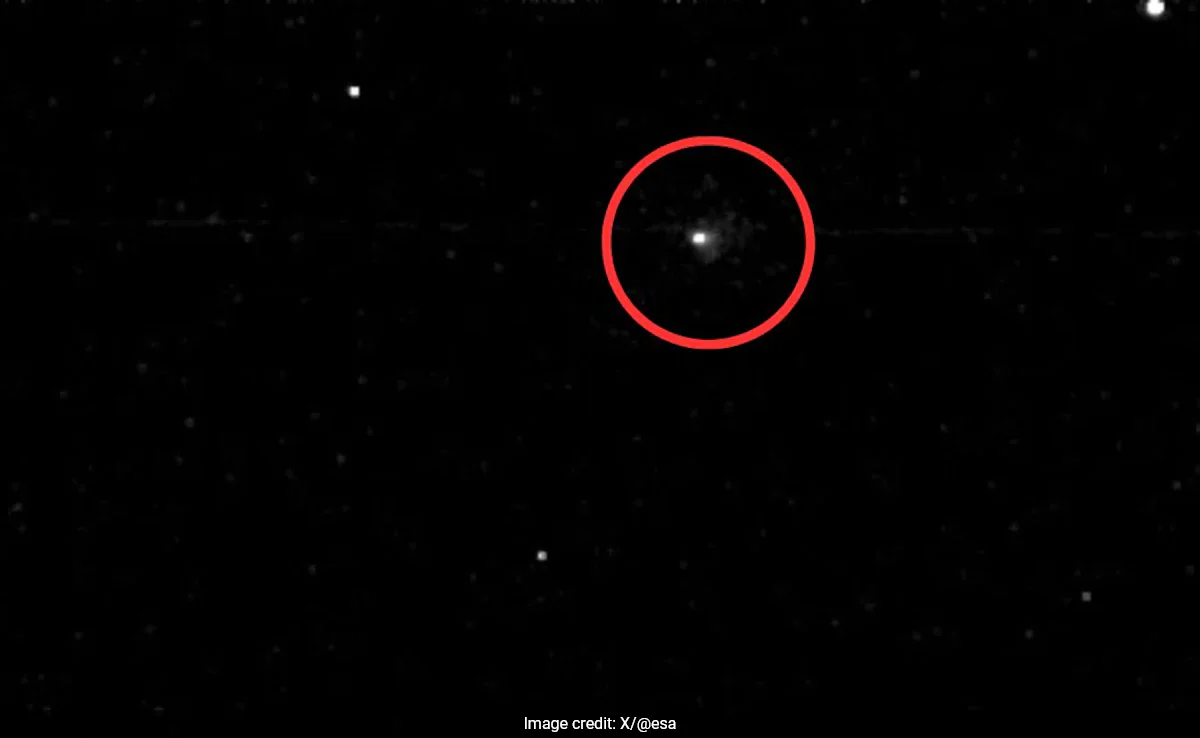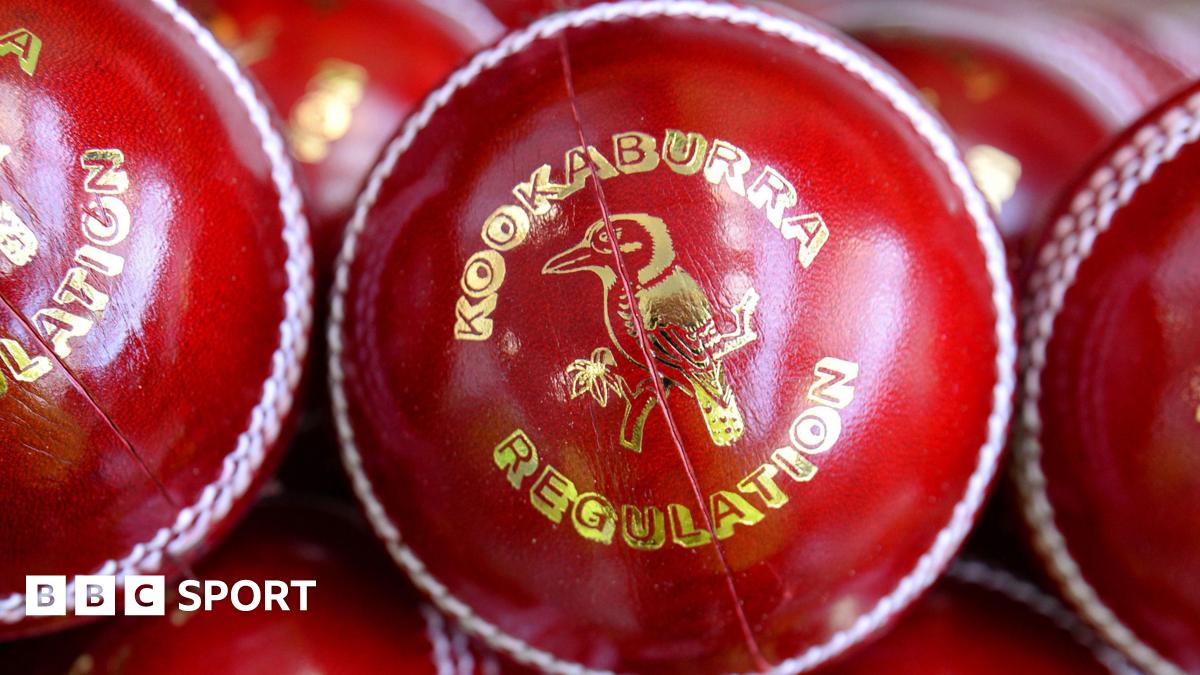Bigg Boss 19 Housemates Dine Together

In a rare and heartwarming moment inside the Bigg Boss 19 house, all contestants were seen sitting together and sharing a peaceful meal, a sight that immediately went viral on social media. The viral picture,…

Bigg Boss 19 Housemates Dine Together

In a rare and heartwarming moment inside the Bigg Boss 19 house, all contestants were seen sitting together and sharing a peaceful meal, a sight that immediately went viral on social media. The viral picture,…

The European Space Agency (ESA) has captured some incredible images of the interstellar comet 3I/ATLAS when it flew past…

We asked for your thoughts on another change of head coach at Watford with Javi Gracia returning to Vicarage Road to replace Paulo Pezzolano after only 10 games in charge for the Uruguayan.
Thanks for getting in touch and here are some of your…

In the aftermath of England’s last Ashes tour of Australia, when they were hammered 4-0, a high-performance review led by former captain Andrew Strauss recommended the Kookaburra be used in the Championship to help prepare players for conditions…

RIYADH, Saudi Arabia, Oct. 8, 2025 /PRNewswire/ — Riyadh Air, Saudi Arabia’s new national carrier, today reveals two significant milestones as it announces a landmark on its journey towards its 2025 debut: the commencement of its first daily flights to London Heathrow Airport (LHR) on October 26th. Riyadh Air is also proud to unveil Sfeer, its groundbreaking loyalty offering, which will provide exclusive benefits to its early Founding Members through “The Founders”.
Operational Excellence: Paving the Way for a World-Class Airline
Jamila
Sfeer
Beginning October 26th, Riyadh Air will commence daily launch flights from Riyadh to London Heathrow Airport (LHR) aboard its designated aircraft, “Jamila”. These carefully sequenced flights, initially on sale to select groups and Riyadh Air employees, are a critical phase in ensuring unparalleled operational readiness while utilizing Riyadh Air’s recently awarded slot at London Heathrow (LHR). Through assessing these initial Jamila flights, the airline builds operational strength for a smooth, reliable, world-class travel experience.
“This isn’t just a launch; it’s a tangible realization of a vision to connect Saudi Arabia to the world, a core pillar of Saudi Vision 2030,” stated Tony Douglas, CEO of Riyadh Air. “Our commitment to begin operations in 2025 is being fulfilled. This rigorous flight program on Jamila allows us to fine-tune every detail, ensuring a seamless, reliable, and world-class experience. This carefully sequenced approach is our pathway to perfect, and we are now incredibly close to full operations as our new aircraft are delivered.”
Sfeer: The Future of Loyalty, Designed for a Generation in Motion
Sfeer, meaning “Ambassador” in Arabic and blended with the English word “sphere”, embodies the vibrant, generous spirit of Saudi Arabia. As it rolls out, Sfeer is set to become one of the world’s most unique and exciting loyalty programs, seamlessly combining community engagement with gamified experiences, all while unlocking the very best of Saudi.
Uniquely, Sfeer members will be able to share level points within their community. Sfeer membership is now open via www.riyadhair.com, and early joiners will be recognized as ‘The Founders’, who will receive priority access to bookings on future flights.
A cornerstone of Sfeer’s innovation is its community-centric design, allowing members to share points, benefits, and Level Points with friends and family, fostering collective reward. Furthermore, Sfeer proudly offers a “no points expiry” policy, ensuring every point and benefit is enjoyed, not wasted.
“With Sfeer, we’re creating much more than just a loyalty program; we’re building a dynamic, digitally immersive lifestyle ecosystem,” added Douglas. “Our vision is to truly change the game, offering unparalleled benefits and fostering a unique sense of community among our members.”
As ‘The Founders’, early joiners receive priority access to bookings on future flights. All Sfeer members can look forward to complimentary onboard Wi-Fi. Joining Sfeer now allows members to start collecting points and gain exclusive early access to routes and priority booking.
Don’t just travel; be a pioneer. This is an invitation to unlock the best of Saudi Arabia.
Photo – https://mma.prnewswire.com/media/2791645/Riyadh_Air_1.jpg
Photo – https://mma.prnewswire.com/media/2791646/Riyadh_Air_2.jpg

Jordi Alba has announced that he will retire at the end of the 2025 Major League Soccer (MLS) season.
The Spanish footballer will hang up his boots at the end of the MLS Cup Play-offs with Inter Miami, which take place across the USA and Canada…

Egyptian-American comedian and satirist Bassem Youssef made a long-awaited comeback to Egyptian TV on Tuesday night, having been off air for more than a decade after going into exile following intense pressure…
Kirkland & Ellis advised CF PharmTech, Inc. (CF PharmTech, HKEx: 2652) on its global offering and listing on the Main Board of the Hong Kong Stock Exchange. The joint sponsors for the listing were CITIC Securities (Hong Kong) Limited and CMB International Capital Limited.
CF PharmTech raised approximately HK$607.7 million from its global offering, which has attracted strong interest and overwhelming demand from the capital markets. The Hong Kong public offering tranche was oversubscribed by approximately 6,700 times, ranking among the top three most oversubscribed IPOs on the HKEx in 2025. The international offering tranche was also oversubscribed by approximately 12.74 times, drawing participation from numerous well-known institutional investors and high-quality long-term capital. The enthusiastic response reflects strong market confidence in CF PharmTech’s growth potential and business prospects.
CF PharmTech primarily focuses on the R&D, manufacturing and commercialization of inhalation technologies and inhalation drugs, with a focus on treating respiratory diseases. It has developed a product portfolio with a broad coverage of patients, medical specialties and therapeutic areas. CF PharmTech intends to apply the proceeds to fund the ongoing R&D and clinical development of its established inhalation formulation product candidates, both domestically and internationally, its pre-clinical R&D across multiple other pipeline programs and technologies, expansion and upgrade of its manufacturing facilities, equipment procurement, and production management systems and working capital and other general corporate purposes.
Kirkland & Ellis’s Asia capital markets team continues to deepen its focus on the life sciences sector, and the CF PharmTech’s IPO represents another milestone transaction in this space.
The Kirkland team included capital markets lawyers Mengyu Lu, Samantha Peng, George Zheng, and Yuchen Han; registered foreign lawyers Bill Feng, Jiawei Zhao, Ashley Sun and Qianqian Yu.

Under the buzzing of Israeli drones and warplanes, Jihan Abu Mandeel watched her five young children play with toy animals in their tiny, makeshift tent in Deir Balah, Gaza. It was a brief moment of childhood amid Israel’s ongoing genocide in…